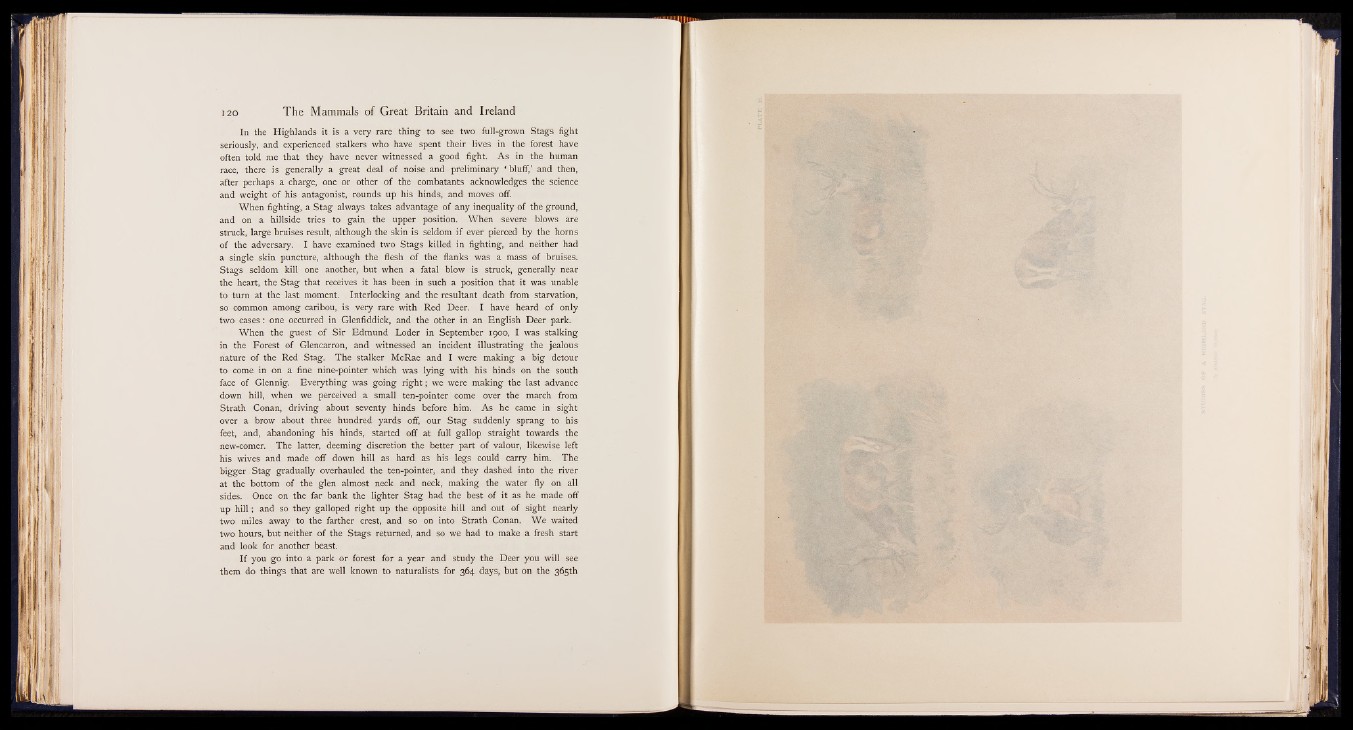
In the Highlands it is a very rare thing to see two full-grown Stags fight
seriously, and experienced stalkers who have spent their lives in the forest have
often told me that they have never witnessed a good fight. As in the human
race, there is generally a great deal of noise and preliminary * bluff,’ and then,
after perhaps a charge, one or other of the combatants acknowledges the science
and weight of his antagonist, rounds up his hinds, and moves off.
When fighting, a Stag always takes advantage of any inequality of the ground,
and on a hillside tries to gain the upper position. When severe blows are
struck, large bruises result, although the skin is seldom if ever pierced by the horns
of the adversary. I have examined two Stags killed in fighting, and neither had
a single skin puncture, although the flesh of the flanks was a mass of bruises.-
Stags seldom kill one another, but when a fatal blow is struck, generally near
the heart, the Stag that receives it has been in such a position that it was unable
to turn at the last moment. Interlocking and the resultant death from starvation,
so common among caribou, is very rare with Red Deer. I have heard of only
two cases: one occurred in Glenfiddick, and the other in an English Deer park.
When the guest of Sir Edmund Loder in September 1900, I was stalking
in the Forest of Glencarron, and witnessed an incident illustrating the jealous
nature of the Red Stag. The stalker McRae and I were making a big detour
to come in on a fine nine-pointer which was lying with his hinds on the south
face of Glennig. Everything was going right ; we were making the last advance
down hill, when we perceived a small ten-pointer come over the march from
Strath Conan, driving about seventy hinds before him. As he came in sight
over a brow about three hundred yards off, our Stag suddenly sprang to his
feet, and, abandoning his hinds, started off at full gallop straight towards the
new-comer. The latter, deeming discretion the better part of valour, likewise left
his wives and made off down hill as hard as his legs could carry him. The
bigger Stag gradually overhauled the ten-pointer, and they dashed into the river
at the bottom of the glen almost neck and neck, making the water fly on all
sides. Once on the far bank the lighter Stag had thé best of it as he made off
up h ill; and so they galloped right up the opposite hill and out of sight nearly
two miles away to the farther crest, and so on into Strath Conan. We waited
two hours, but neither of the Stags returned, and so we had to make a fresh start
and look for another beast.
If you go into a park or forest for a year and study the Deer you will see
them do things that are well known to naturalists for 364 days, but on the 365th